GCSE Levers
Levers
A lever is a force multiplier.
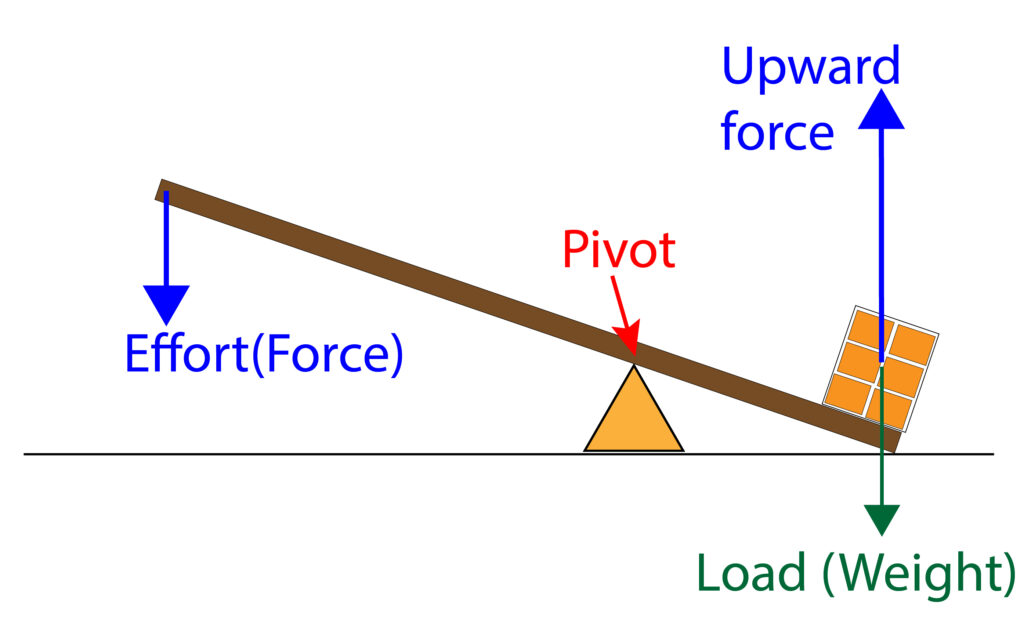 The force that the person would apply is known as the effort and the weight of the object that is being lifted is known as the load. The pivot is the turning point.
The force that the person would apply is known as the effort and the weight of the object that is being lifted is known as the load. The pivot is the turning point.
Look at the size of the arrows. The effort arrow is shorter than load arrow. This is because the effort force is smaller than the weight. However, the lever acts as a force multiplier, so a small effort force will produce an upward force on the load that is greater than the weight, allowing the object to be lifted.
Lifting a drain cover
A crowbar can be used to lift a drain cover as shown below.
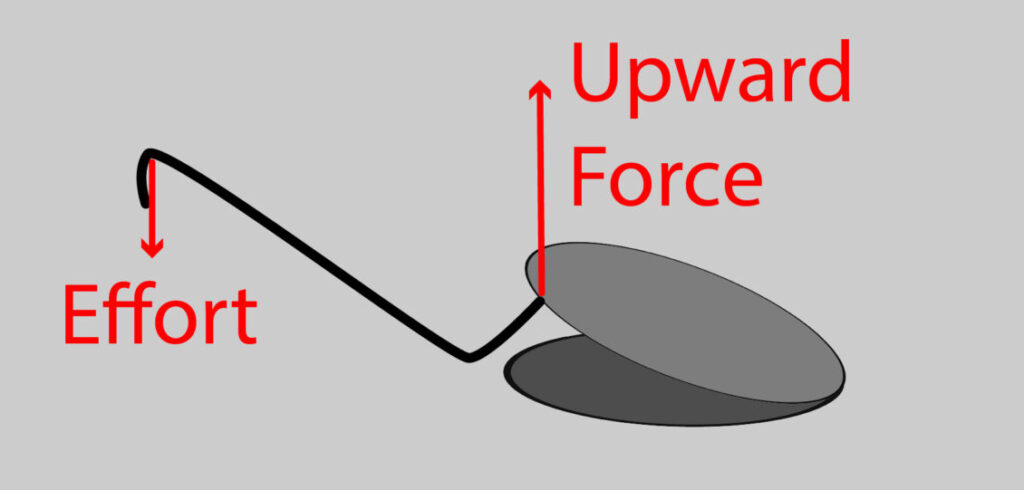
In this case the crowbar will also act as a force multiplier. A small effort force is applied and it results in a large upward force to lift the drain cover.
Bottle openers
Bottle openers also act as levers, or force multipliers.
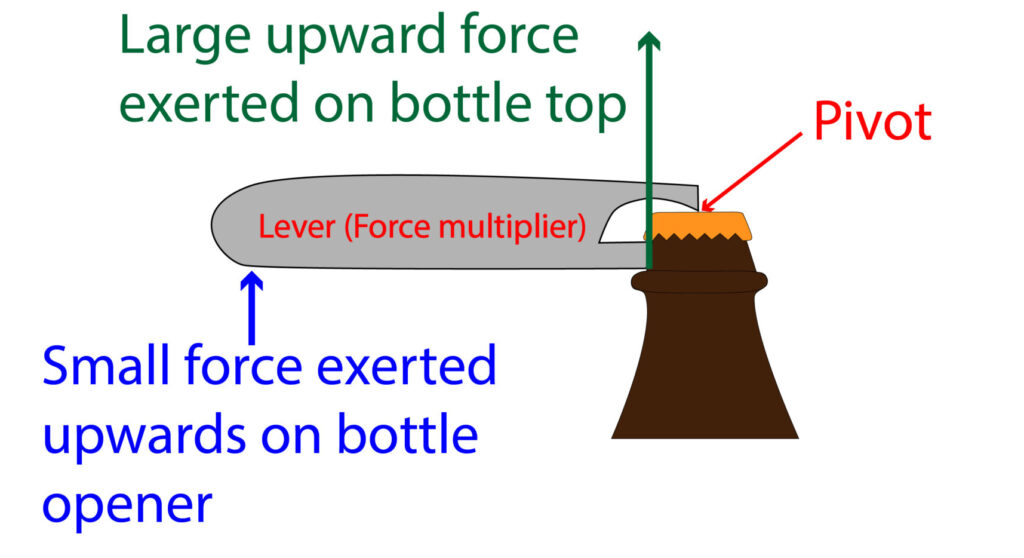
How to make the lever work better
The greater the distance between the pivot and where the effort (force) is applied, the greater the force magnification.
So, if we are lifting a rock, the longer the distance between pivot and line of action of force, the smaller the force that needs to be used to lift that rock. As the longer distance has greater force magnification, so it will produce a larger upward force.
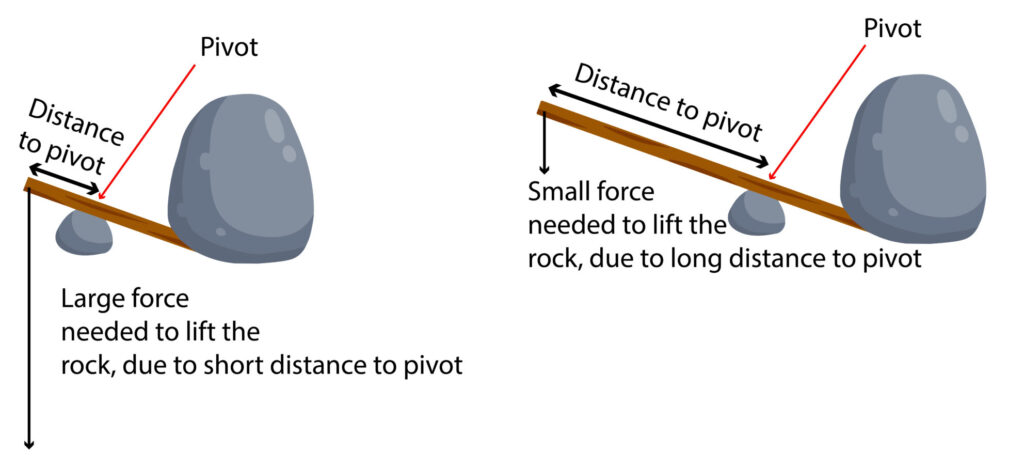
If you use a shorter lever, that has a smaller distance between the pivot and the line of action of the force, then you will need to use a larger force to lift the object.
Practice questions
1.Use the image below to help you to answer the following question
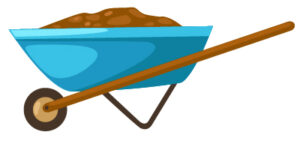
Explain using ideas of levers why using a wheelbarrow makes it easier to move a load such as heavy soil.
2. Use the image below to help you to answer the following question

Explain why using a longer oar is helpful when rowing the boat
3. Use the image below to answer the following question
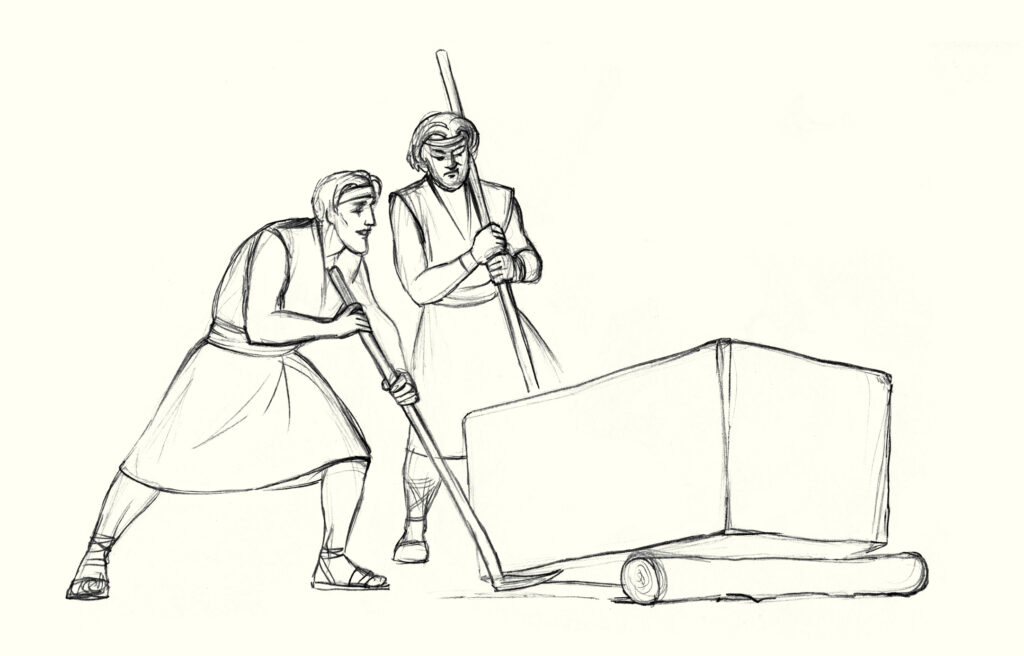
Identify the pivot in the diagram above and also indicate what both men could do to allow them to lift the rock more easily
Absorption and Emission of EM Radiation
JJ Thomson and Plum pudding model
Ernest Rutherford and the Nuclear Model
Niels Bohr changing the Nuclear Model
Discovering the Proton and Neutron
Measuring radiation from radioactivity
Radiation types and properties
Random nature of radioactive decay
Radioactive contamination or irradiation
Hazards of contamination and irradiation
Studies on the effects of radiation on humans
Different half lives of radioactive isotopes
Nuclear Fission Chain Reaction
Writing nuclear fission equations